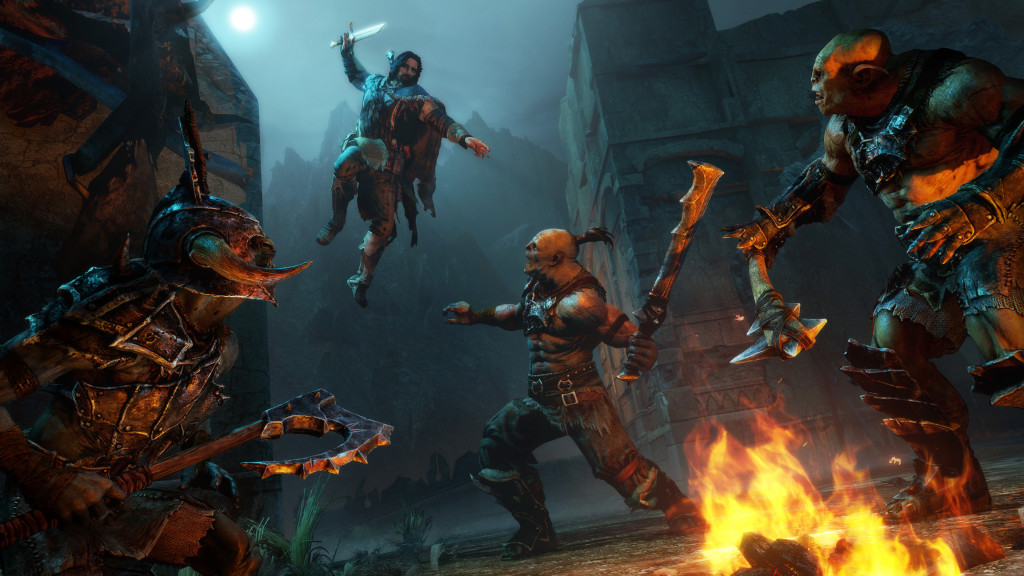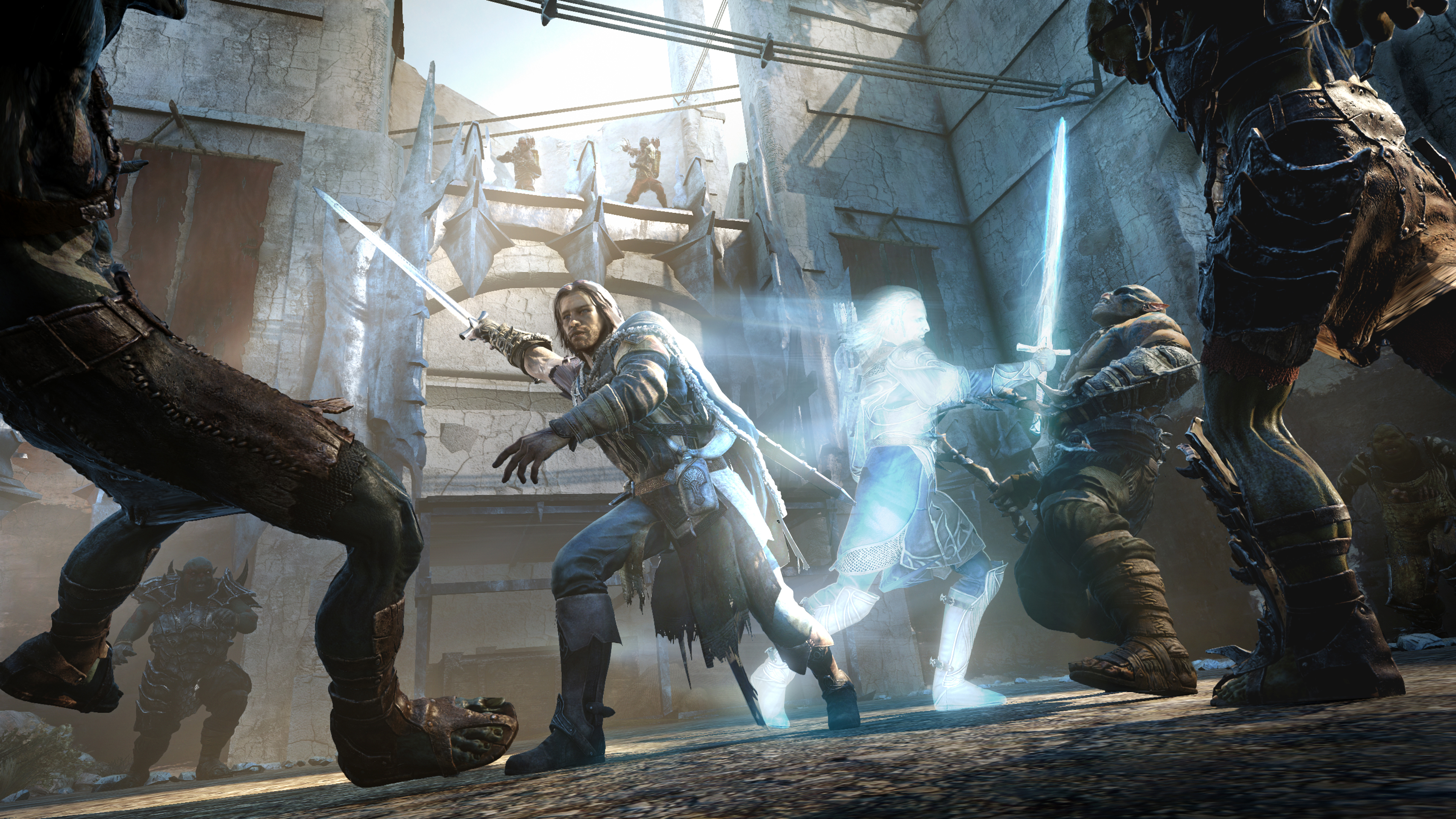Shadow of Mordor: Everything You Need to Know
If you want to know how Shadow of Mordor ties into Tolkien lore you know, here's some information on the newest adventure in Middle-earth.

What would you get if you combined Assassin's Creed and The Lord of the Rings? Aside from a pretty hefty lawsuit, the result might look something like Shadow of Mordor from Monolith Productions and WB Games. Rather than rehash a book or movie plot, Shadow of Mordor spins a whole new tale within the Tolkien mythos, and if the previews leave you feeling a little lost, you won’t be alone.
Shadow of Mordor differs from many previous Lord of the Rings games in that it delves very deeply into Tolkien ephemera from books you may never have heard of, let alone read. If you want to know how Shadow of Mordor ties into the books and movies you know — and what you might want to read next in order to get the full story — here's some information on the newest adventure in Middle-earth.

What is Shadow of Mordor?
In brief, Middle-earth: Shadow of Mordor (no one uses its full title) is an open-world action game that takes place between the stories of The Hobbit and The Lord of the Rings. It's important to note that the game's setting is that of the movies, not the books, as Monolith does not have the rights to Tolkien’s literature.
MORE: Best PS4 Games 2014
Shadow of Mordor will come out for PS4, Xbox One and PC on Sept. 30 in most territories, although Australians will have to wait until Oct. 8, and the Xbox 360 and PS3 versions won't hit until later this year. Would-be adventurers will have to shell out $60 up front, plus additional money for a surprisingly large amount of planned DLC.
As for the game itself, you play as a Ranger named Talion. The Rangers, you may recall, are the mysterious order of wandering warriors to which Aragorn, the dispossessed King of Gondor, belonged. Talion, however, has unusual abilities even by ranger standards, as he dies and comes back as a Wraith.
Sign up to get the BEST of Tom's Guide direct to your inbox.
Get instant access to breaking news, the hottest reviews, great deals and helpful tips.
As a result, Talion walks in two worlds and has gameplay abilities to match. He can use a Ranger's stealth, cunning and combat prowess to take out orcs by himself, or use his Wraith powers to dominate enemies' minds and force them to do his will — much like the Dark Lord Sauron did in the books and movies.
As far as the actual meat and potatoes of the plot go, Monolith has been quite tight-lipped, but there are a few things we know, and those things get confusing.

Where Does Shadow of Mordor Fit into The Lord of the Rings?
Even if you've only seen the Peter Jackson movies, you're probably familiar with the basic chronology of Tolkien's books. In The Hobbit, Bilbo Baggins goes on an adventure with 13 dwarves and, along the way, steals a magic ring from the twisted subterranean creature Gollum. That ring sets off a chain of events that culminates in The Lord of the Rings trilogy: The Fellowship of the Ring, The Two Towers and The Return of the King.
What you may not know is that there are three other books in the main Tolkien canon: The Silmarillion, The Children of Húrin and Unfinished Tales of Númenor and Middle-earth. While these books have little direct bearing on Tolkien's magnum opus, they fill in a lot of the gaps in The Hobbit and The Lord of the Rings, as well as explain basically every poem, song, historical tale and offhand reference the characters bring up.
For example, have you ever wondered how The Hobbit, a short children's book, could be stretched out into three movies? A lot of the extra material is needless action, but some scenes — such as the meeting of the White Council or Gandalf's quest to stop the Necromancer in the South — come out of Unfinished Tales. When Aragorn sings of Eärendil the Mariner, he's referring to the climax of The Silmarillion.
Although the material in The Silmarillion and Unfinished Tales might make for great video games, the Tolkien estate does not allow licensed content from them. How, then, could characters and events from these books make their way into Shadow of Mordor?

Who is Celebrimbor?
The answer is, essentially, through a loophole. In the game, Talion comes under the tutelage of another Wraith — this one named Celebrimbor. When Tolkien diehards first heard the name, the Internet was abuzz with both excitement and resentment. Celebrimbor is a pivotal supporting-cast member from The Silmarillion, but even if you've never read that book, you probably know Celebrimbor's handiwork: the three Elven rings.
The poem that kicks off The Lord of the Rings describes 20 Rings of Power in total: three for the Elves, seven for the Dwarves, nine for Men and one for Sauron, a fell Maia demigod. What it does not mention is that the three Elven-rings came first, and inspired Sauron to forge his own Ring to bind the others to his will. Celebrimbor was the Elven smith who forged the rings.
Although Celebrimbor is primarily a character from The Silmarillion, he is mentioned precisely six times in The Lord of the Rings, which gives Monolith the rights to use his character. However, since The Silmarillion is off limits, Monolith can shape Celebrimbor and the backstory of Middle-earth in almost any way it sees fit. In fact, if Shadow of Mordor follows the Silmarillion's story too closely, it could wind up in trouble with the Tolkien estate.
For those of you who were wondering whether Shadow of Mordor fits into Tolkien's canon, the answer is a definitive no. Celebrimbor never came back as a Wraith; no man save for Beren Camlost ever came back from the Halls of Mandos beyond the grave. Even so, this may be the first glimpse into Tolkien's larger world for many Lord of the Rings fans reared only on the Peter Jackson films.
(The Ralph Bakshi film is another story, but if you're even aware that the legendary animator made a Lord of the Rings film in 1978, you are probably not the kind of person who needs this primer.)

What’s Unique About the Gameplay?
Tolkien fans could (and will) spend hours and hours speculating about where Shadow of Mordor fits into the canon and where it doesn't, but that discussion will be much easier to have when the game is out and we know the full story. In the meantime, there's only one other thing you need to know about the game: the Nemesis system.
MORE: Best Xbox One Games 2014
I took a glance at the Nemesis system at E3 2014, but didn't have a chance to take a deep dive. Monolith recently sent some additional information about it, claiming that it is the "most innovative gaming mechanic since the launch of next-gen consoles." That's probably overselling it a bit, but it's still a unique system that allows players to customize important parts of their playthroughs.
As Talion fights his way through Sauron's legions of orcs, he can choose a nemesis from among their captains. Each captain has a unique appearance, name, voice and set of personality traits. For example, some may prefer to hide in towers, while others have no qualms about taking the fight right to Talion. Furthermore, as Talion dispatches the captains (or loses to them), the relationships between the orcs will also change as they take part in their own power struggles and intrigues.
Players will have to wait until the game's release to learn whether the Nemesis system impacts gameplay in a meaningful way or just provides more interesting enemies to dispatch. Either way, if you needed a reason to check out Shadow of Mordor beyond its connection to Lord of the Rings, the Nemesis system is probably the most interesting thing the title promises in terms of gameplay.
Tom's Guide will publish a full review of Shadow of Mordor once the game launches. Until then, you probably don't have time to reread the entire Tolkien canon, but maybe you could thumb through The Hobbit again. If you want to know more about Bilbo's sword from the ancient realm of Gondolin, you know what to read next.
Marshall Honorof is a Staff Writer for Tom's Guide. Contact him at mhonorof@tomsguide.com. Follow him @marshallhonorof and on Google+. Follow us @tomsguide, on Facebook and on Google+.
Marshall Honorof is a senior editor for Tom's Guide, overseeing the site's coverage of gaming hardware and software. He comes from a science writing background, having studied paleomammalogy, biological anthropology, and the history of science and technology. After hours, you can find him practicing taekwondo or doing deep dives on classic sci-fi.
-
Jonb2011 I know this article isn't new anymore, and you may never read this comment, but there's something I'd like to point out. You mention that Aragorn was a member of the rangers, but he wasn't. Not those rangers at least; if I remember correctly Aragorn was a ranger of the north, the descendants of Arnor, while Talion is a member of the southern group, The Rangers of Ithilien. Aside from this small tidbit, I definitely enjoyed your article and thought it was very well written.Reply -
Jonb2011 Looking back I realize the article isn't old at all, my mistake! I was surprised as a lot of new information is available that wasn't mentioned.Reply

